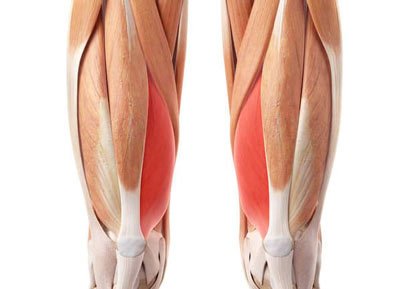With so many moving parts that make up your knee joints, it’s often difficult to pinpoint the exact source of your knee pain. At the first sign of discomfort, you must receive an accurate diagnosis from a top-rated pain doctor in Manhattan at Pain Management NYC. Patellofemoral pain syndrome is one of those conditions that often gets overlooked or misdiagnosed. Avoid painful treatments, surgery and other invasive plans by seeking treatment from pain doctors that not only correctly diagnose your condition, but offer safe, non-invasive treatments to keep you pain-free.
Patellofemoral pain syndrome occurs when you experience pain around and under your kneecap, which is called the patella. It’s a condition that affects children, teenagers and adults, and it can occur in one knee or both knees. It’s also known as jumper’s knee or runner’s knee.
Have your knee evaluated by the best pain management doctors in New York whenever you have knee pain that:
- Lingers for more than a few days
- Hurts more after exercising
- Worsens after sitting for long periods of time

At our NYC pain relief center, you’re under the care of top knee pain doctors. They correctly diagnose the cause of your pain and recommend an effective plan for patellofemoral pain syndrome treatment. Don’t settle for simply masking your pain when you can receive interventional treatment from doctors using the most advanced diagnostic equipment in New York to deliver the latest in pain treatment options.
Symptoms of Patellofemoral Pain Syndrome
The most common symptom of patellofemoral pain syndrome is a dull, aching pain in the front of your knee that begins gradually and seems to be activity-related. Other symptoms of this condition include:
- Pain after sitting with your knees in a bent position for a long period of time
- Pain during activities that require bending your knee constantly, such as climbing stairs, jumping or squatting
- New pain that develops while doing your normal sporting activities such as running, cycling or playing basketball or tennis
- A sensation of worsening pain as the intensity of your activity increases
- Cracking, grinding or popping sounds when standing up after sitting for a period of time or when squatting, climbing stairs or straightening a bent knee
- Tenderness in the kneecap when touched
Many of the symptoms of patellofemoral pain syndrome resemble other possible knee problems. So seek a diagnosis as soon as knee pain first begins to prevent aggravating the condition. When you’re experiencing discomfort, pain or instability in your knee, you must obtain an accurate diagnosis by consulting a top pain management doctor in NYC.
Causes and Risk Factors for Patellofemoral Pain Syndrome
Sports that require a lot of running and jumping put repeated stress on your kneecap or irritation under it. Overuse of the knee joint or weak muscles around your knee can also lead to this syndrome. If you’ve experienced a trauma to your knee, such as a dislocation or a fracture, get medical help. If the muscles around your kneecap don’t keep it properly aligned, your risk of developing patellofemoral pain syndrome increases.
Patellofemoral pain syndrome is usually associated with teens or young adults because the older you get, the more likely it is that your knee pain is related to arthritis. Additionally, teens and young women usually don’t have sufficient muscle mass to sufficiently support certain activities. Women are more likely to develop patellofemoral pain syndrome than men. This tendency appears to be related to the way a woman’s wider pelvis increases the angle where the bones of the knee joint meet.
Treatment for Patellofemoral Pain Syndrome
Patellofemoral pain syndrome treatment starts with discontinuing activities that may be causing pain, such as jumping or running. Interventional therapies that your pain doctor may suggest include rest, ice and elevation, which may help to reduce your discomfort. Other treatment options for relieving patellofemoral pain include:
- Physical therapy. When overseen by a trained physical therapist, various stretching and strengthening exercises can improve the functionality of the muscles around your knee. The goal is to improve endurance, strength and range of motion, while correcting any muscle imbalances. Taping your knee may help to reduce pain and improve your ability to exercise.
- Orthotic inserts. Special shoe inserts provide arch support. They’re custom-made to stabilize and align your ankle and foot, which also serve to stabilize your kneecap.
- Corticosteroid injections. Knee injections may be used to relieve pain if there is significant inflammation. This provides relief on a temporary basis, as the effect of the injection lasts between several week s and several months, but it gives you time to strengthen your knee through treatments such as physical therapy.
Don’t ignore your symptoms because they’re likely to get worse over time if untreated. And you risk further knee injuries if you don’t get medical attention. The best patellofemoral pain syndrome treatment is based on a variety of factors including your age, your overall health and the intensity of your pain. Contact the expert pain management doctors at Pain Management NYC to find out the best treatment options for you.

Leon Reyfman, MD, is a top-rated, best-in-class interventional pain management doctor. He is a nationally recognized pain relief specialist and is among the top pain care doctors in New York City and the country. He is an award-winning expert and contributor to prominent media outlets.
Dr. Leon Reyfman has been recognized for his thoughtful, thorough, modern approach to treating chronic pain. He has been named a “top pain management doctor in New York” and one of “America’s Top Doctors™” for advanced sports injury treatments. Among other accolades, he was voted by peers as a “Castle Connolly Top Doctors™” and “New York Super Doctors™”. Dr. Leon Reyfman was a part of the medical team at the 2016 Summer Olympic Games in Rio de Janeiro, Brazil.
